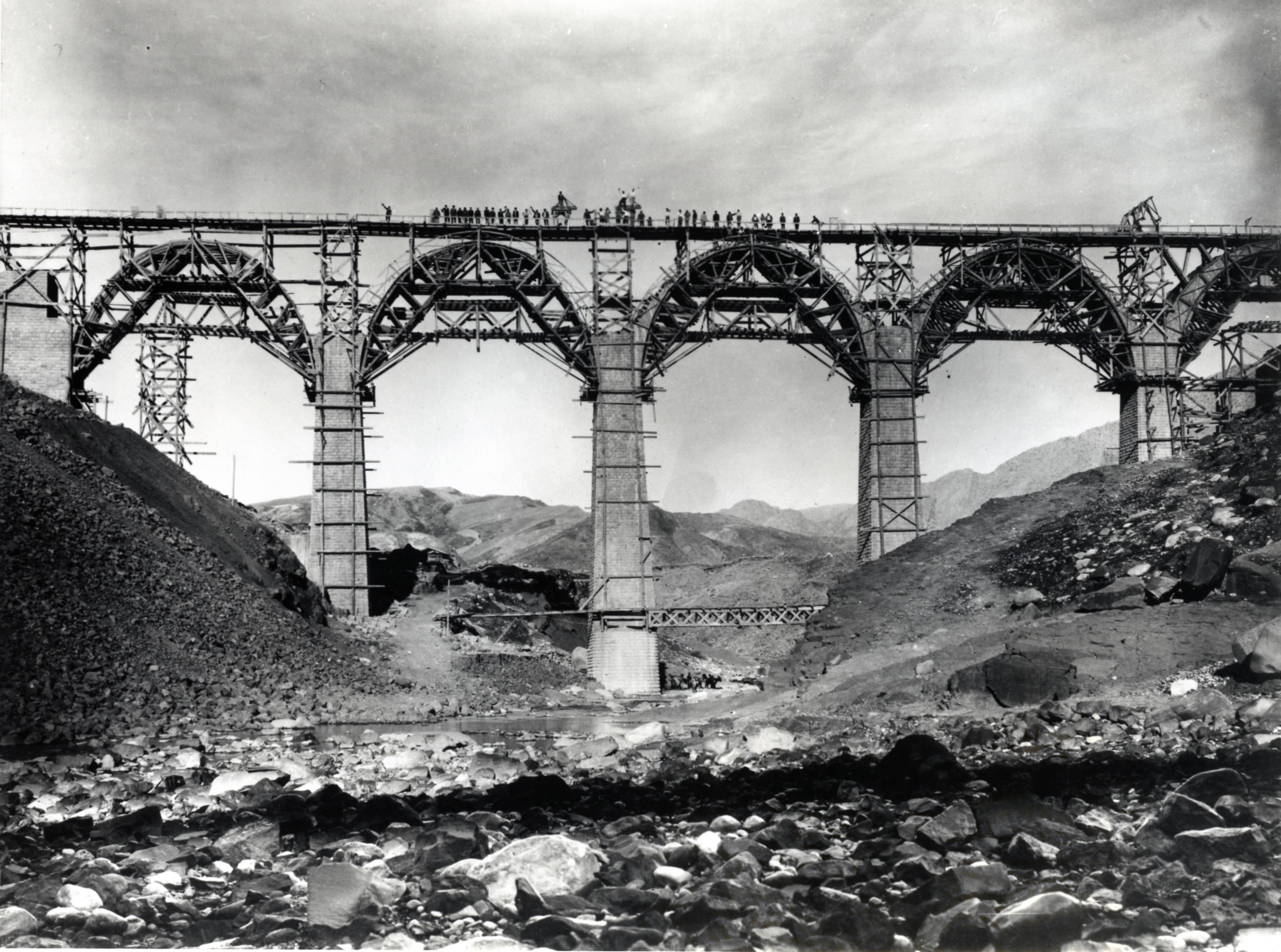Trans-Iranian Railway

The Trans-Iranian Railway was one of the main engineering works of the twentieth century. Completed in a country still far from industrial development (in many cases the railway system preceded the building of modern roads), it had to come to terms with Iran's peculiar orography, which required overcoming passes above 2,000 meters in altitude and the excavation of 190 tunnels (as many as 73 of which made by Impresit, which then became part of the Webuild Group).
The lots commissioned to the Italians on the northern stretch of the line involved the construction of structures required to overcome a height difference of 1,000 meters in under 50 km of track, with the construction of coils and other devices that allow the railway to function with an average grade of 2.6%. The lots for the southern portion, on the other hand, had to deal with the rugged mountains of the Khūzestān region, over 1,000 km from the capital and characterized by a torrid desert climate.
The limits of the technology available in the 1930s and the isolated location of the construction sites made the work a huge effort for 600-900 Italians and for the 12,000 local workers involved. If to the north the Talar valley was covered by a thick mantle of snow five months a year, in the southern construction sites the work could only be carried out at night during the months when the daytime temperatures were around 40-50° Celsius.
In 1939 the new railway was completed with important repercussions to Iran's modernization process: not only did the railway connection make the transport of goods possible, but it also had positive impact on other modern activities, it improved the central government's control over the peripheral areas, and it played an important military role. Above all, the Trans-Iranian line symbolized the desire of the Pahlavi Dynasty to position Iran among the modern countries.

Technical data
+ + +
km Total length of the lots
+ + +
tunnels for a total length of 17 Km
+ + +
m Viaducts and bridges
+ + +
m3 Surface rock excavation